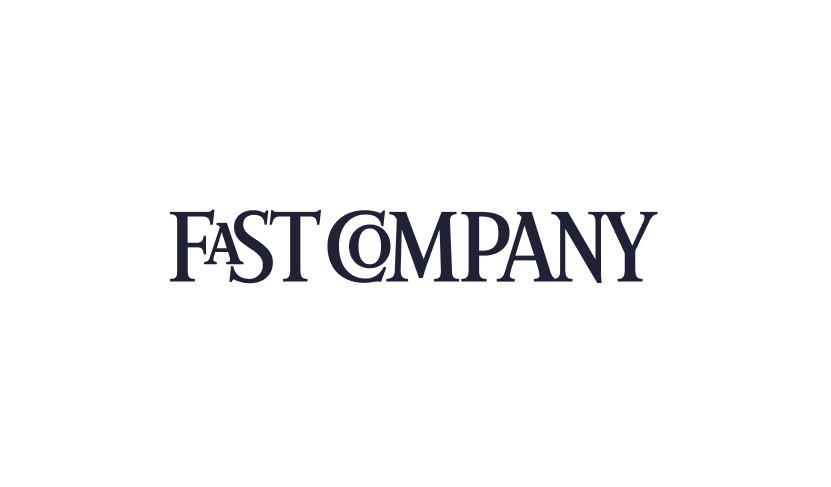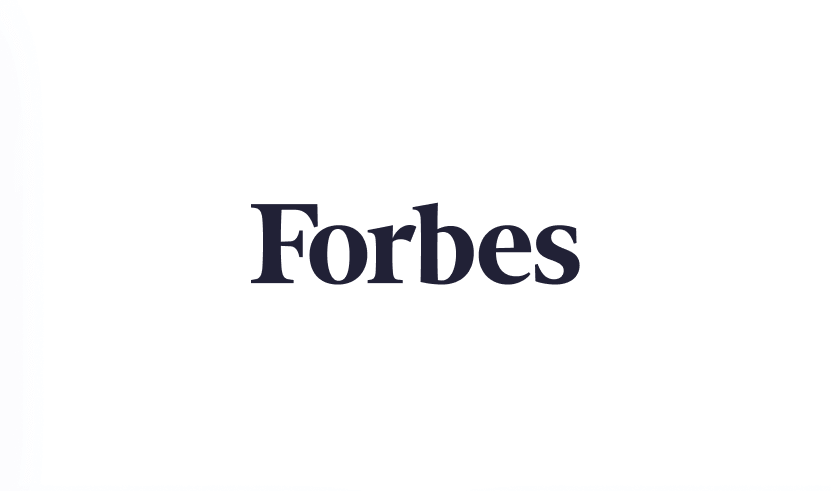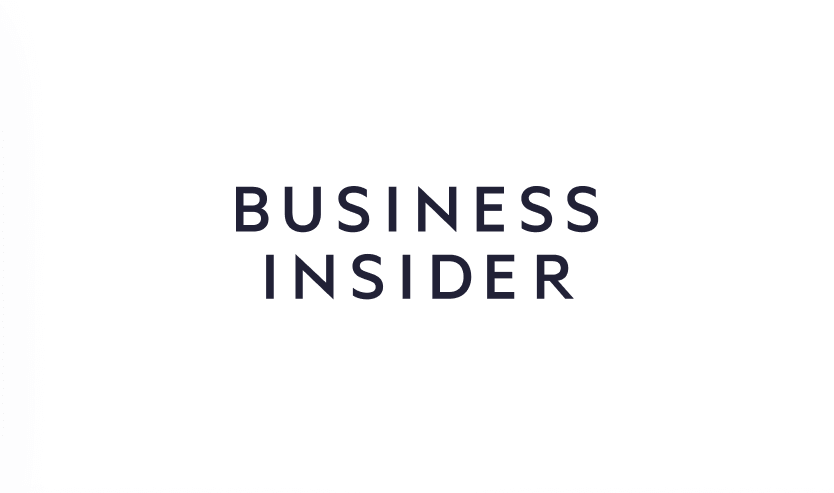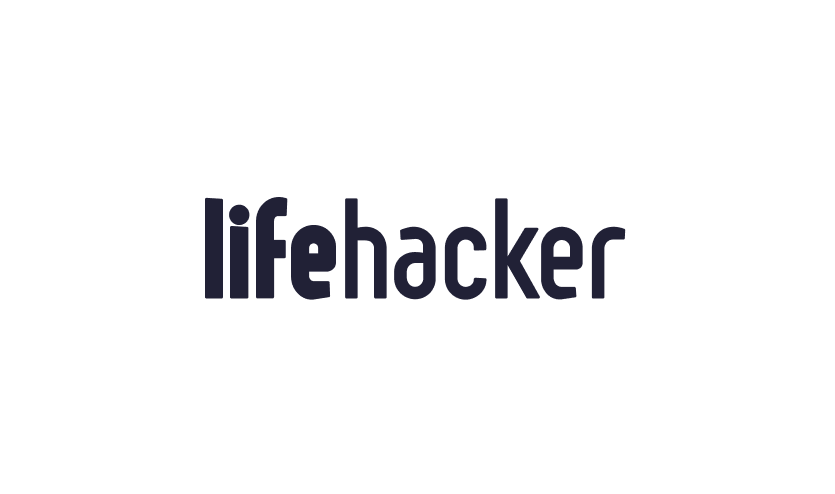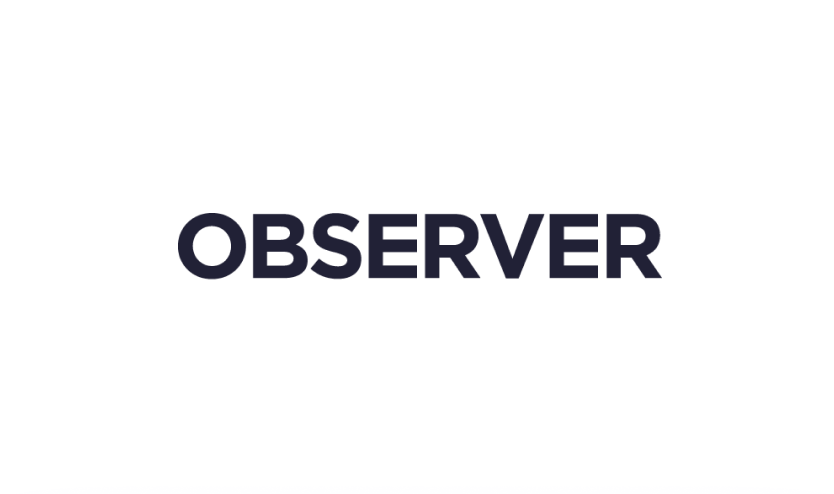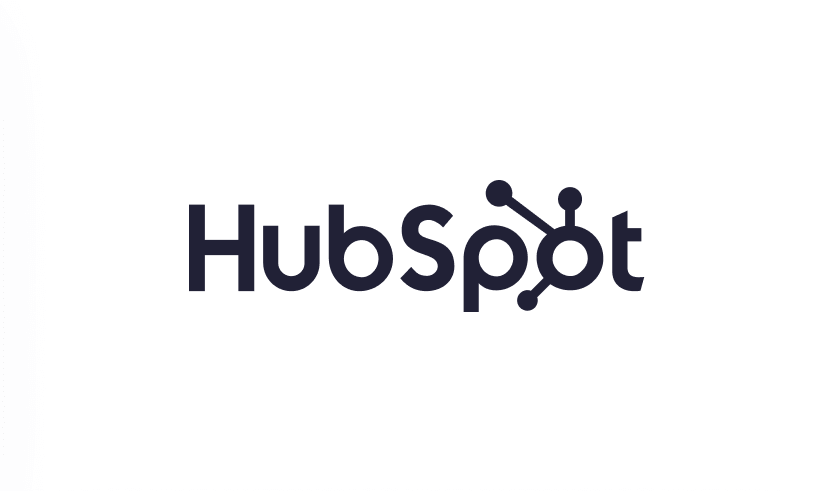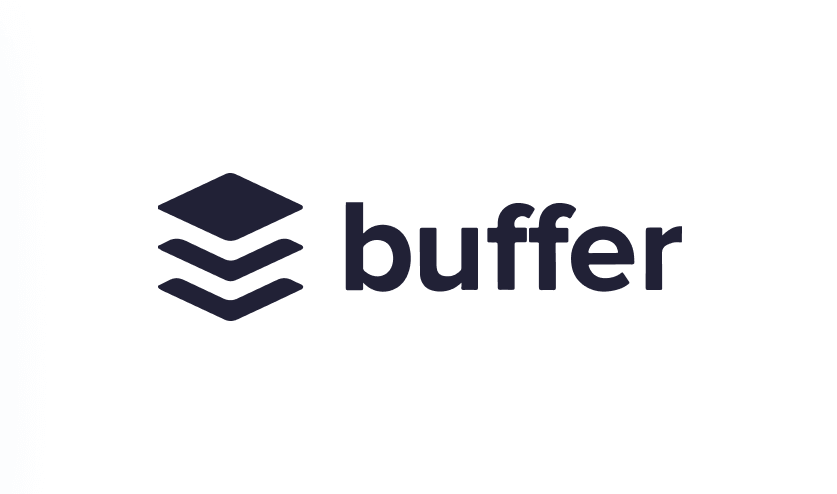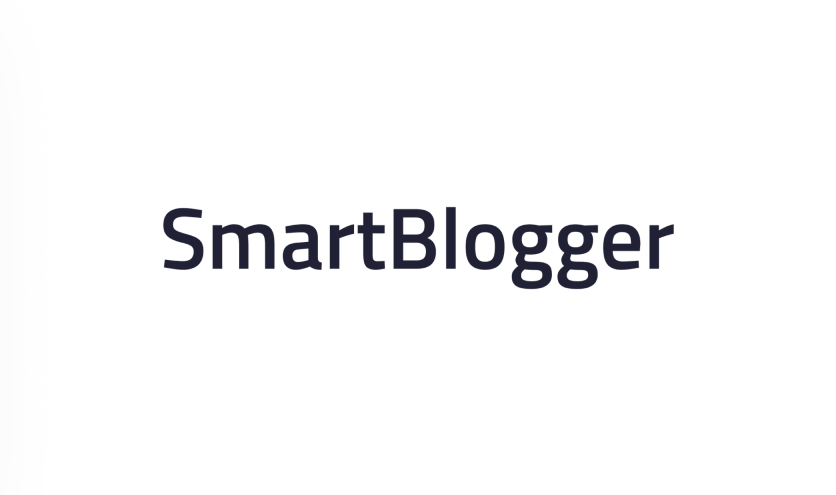Top 8 Best Email Subject Lines to Boost Open Rates
Unlocking the Power of Email Subject Lines
Your email subject line is the first impression and the key to higher open rates. This listicle reveals eight best email subject lines strategies to boost your email marketing ROI. Learn how personalization, urgency, curiosity, questions, benefits, social proof, announcements, and emotional triggers can drastically improve your email performance. Master these techniques and watch your click-through rates soar.
1. Personalization Strategy
One of the most effective tactics for crafting compelling email subject lines is personalization. This strategy involves incorporating the recipient's name, location, past purchase behavior, or other personal data into the subject line to create a more tailored and relevant email experience. Instead of feeling like they're receiving a generic mass email, recipients feel seen and understood, leading to a significantly higher likelihood of opening your email. This targeted approach moves beyond simply addressing the recipient by name and delves into creating a subject line that genuinely resonates with their individual interests and needs.
Personalization can take many forms, from using the recipient’s first name to referencing their past purchases or even mentioning their location. The key is to use data you've collected responsibly to create a subject line that speaks directly to the individual. This strategy requires a robust customer database and segmentation capabilities, allowing you to categorize subscribers based on various criteria and tailor your subject lines accordingly. Features might include using the recipient's first name, last name, or company name; incorporating behavioral data like past purchases or browsing history; including location-based information; and leveraging demographic or psychographic data.
The benefits of personalization are substantial. Campaign Monitor reports that personalized subject lines increase open rates by an average of 26%. This is because personalization creates an emotional connection with recipients, making them feel more valued by your brand. In a crowded inbox, a personalized subject line is far more likely to stand out and grab attention, improving not only open rates but also click-through rates and conversions. Ultimately, this personalized touch fosters brand loyalty and encourages long-term engagement.
However, like any powerful tool, personalization has its drawbacks. It requires extensive customer data collection, raising potential privacy concerns. Over-personalization can backfire, making recipients feel uneasy or “creeped out.” Data errors can lead to embarrassing mistakes, such as addressing someone by the wrong name. Creating and segmenting personalized subject lines is also more time-intensive than crafting generic ones. Finally, there's the challenge of handling missing data fields gracefully.
Consider these examples of successful personalization:
Amazon: "Sarah, your items are waiting in your cart" (targets abandoned cart behavior)
Spotify: "John, your 2023 Wrapped is ready!" (leverages user activity data)
Airbnb: "Mike, you have 3 new homes in San Francisco" (combines location and user preferences)
Netflix: "New episodes of shows you love, Jennifer" (targets viewing history)
These examples demonstrate how personalization can be used across different industries to enhance email engagement. Each subject line speaks directly to the individual recipient, making the email feel more relevant and less like a generic marketing message.
Here are some actionable tips to effectively implement personalization in your email subject lines:
Test different levels of personalization: Start with first names and gradually incorporate more data to find the sweet spot that resonates with your audience without feeling intrusive.
Ensure data accuracy: Double-check your data before sending campaigns to avoid embarrassing errors. A simple typo in a name can negate the positive impact of personalization.
Start simple: Begin with first names before advancing to more complex behavioral data. Mastering the basics first will set you up for success with more advanced techniques.
Combine personalization with other strategies: Pair personalization with urgency, curiosity, or exclusivity for maximum impact.
Always have fallback options: Prepare default subject lines for cases where data is missing to ensure a consistent experience for all recipients.
Companies like Amazon (a pioneer in e-commerce personalization), Mailchimp (which made personalization accessible to small businesses), HubSpot (known for its advanced marketing automation), and Salesforce (which champions CRM-driven personalization) have demonstrated the power of this strategy.
Personalization deserves its place on the list of best email subject line strategies because it directly addresses the recipient's individual needs and interests. When executed thoughtfully and strategically, it is a powerful tool for boosting open rates, driving engagement, and building stronger customer relationships. By making your subscribers feel valued and understood, you can significantly enhance the effectiveness of your email marketing campaigns and ultimately drive better business outcomes.
2. Urgency and Scarcity Strategy
One of the most effective tactics for crafting compelling email subject lines and boosting open rates leverages the psychological principles of urgency and scarcity. This strategy creates a sense of immediate need or limited availability, motivating recipients to open emails and take action quickly. It preys on our natural fear of missing out (FOMO) and loss aversion—the psychological tendency to feel the pain of a loss more strongly than the pleasure of an equivalent gain. This compels recipients to engage before an opportunity expires or a product becomes unavailable. By tapping into these innate human drivers, you can significantly improve your email marketing performance. This approach is particularly effective for sales promotions, limited-time offers, event registrations, and even for rescuing abandoned carts and re-engaging dormant subscribers.
This strategy utilizes several key features to create that all-important sense of urgency. Time-sensitive language like "today only," "flash sale," or "last chance" immediately grabs attention. Countdown timers, either within the subject line or the email body, visually reinforce the limited-time nature of the offer. Messaging highlighting limited quantities or availability, such as "only 2 rooms left" or "selling fast," further emphasizes scarcity. Deadline-driven calls to action, such as "book now before it's too late," encourage immediate engagement. Finally, positioning offers as exclusive or limited-time adds another layer of desirability. Action-oriented urgency words like “Don’t Miss Out”, “Ends Soon”, “Final Hours” and “Limited Time” all serve the purpose of creating a sense of urgency and importance for the reader.
The benefits of using urgency and scarcity in your best email subject lines are undeniable. They significantly increase open and click-through rates, driving immediate action and reducing procrastination. The created psychological pressure can significantly boost sales and conversions, making it a highly effective tactic for promotions and time-sensitive offers. However, there are potential downsides to consider. Overusing this strategy or employing false deadlines can damage trust and erode your credibility. It can also attract primarily price-sensitive customers who aren't necessarily loyal to your brand. Furthermore, if executed poorly, it can make your emails appear spammy or manipulative, leading to negative brand perception. The effectiveness also diminishes with frequent use to the same audience, so it’s crucial to vary your tactics and maintain a balance.
Successful implementation of this strategy can be seen across various industries. Booking.com masterfully uses scarcity messaging like "Only 2 rooms left at this price!" to drive immediate bookings. Flash sale retailers create a frenzy with subject lines like "24 hours left: 50% off everything." Event companies utilize deadlines effectively with messages like "Last chance to register - doors close tomorrow." Even SaaS companies leverage urgency with subject lines such as "Your free trial ends tomorrow" to encourage conversions. E-commerce businesses can recapture potentially lost sales with abandoned cart emails using subject lines like "Your cart expires in 1 hour." For deeper insights into using these tactics effectively without resorting to constant discounts, learn more about Urgency and Scarcity Strategy.
To effectively use urgency and scarcity in your own email marketing, follow these tips: Always use genuine urgency and never create false deadlines. Combine urgency messaging with specific numbers for added credibility (e.g., "Only 10 spots left"). Vary your urgency tactics to prevent audience fatigue and A/B test different urgency phrases and timeframes to find what resonates best with your audience. Most importantly, always follow through on stated deadlines to maintain trust and build a strong, positive brand reputation. This consistent approach ensures the long-term effectiveness of this powerful strategy, contributing to your overall email marketing success and boosting your bottom line. By understanding the nuances of urgency and scarcity and implementing these best practices, you can harness the power of FOMO and loss aversion to drive impressive results.
3. Curiosity Gap Strategy
Crafting compelling email subject lines is crucial for grabbing your audience's attention and boosting open rates. The Curiosity Gap Strategy stands out as one of the best email subject lines techniques because it leverages a fundamental human trait: curiosity. This strategy creates an information gap, revealing just enough information to pique interest, but withholding enough to make opening the email feel necessary. It plays on our psychological need for closure and completion, making the reader feel compelled to click and discover the missing piece of the puzzle. This makes it an incredibly effective tool for email marketers across various industries.
This strategy thrives on incomplete information that teases the fuller content within the email. Think of it as a carefully placed breadcrumb trail leading your recipient to the main course. It employs question-based or mysterious phrasing, intriguing statements without obvious conclusions, and often utilizes punctuation like ellipses, brackets, or exclamation points to suggest there's more to the story. It also frequently incorporates emotional hooks that demand resolution, creating a sense of urgency or anticipation. For instance, instead of a straightforward subject line like "New Product Launch," a curiosity gap approach might use "The One Product That Will Change Your [Relevant Area of Life] Forever." This immediately sparks interest and encourages recipients to open the email to discover what this life-changing product could be.
The benefits of using the Curiosity Gap Strategy for best email subject lines are numerous. It significantly boosts open rates by creating that aforementioned mental tension. It also naturally encourages engagement since human curiosity is a powerful motivator. These subject lines are inherently more memorable and stand out from the deluge of straightforward, often ignored subject lines in a typical inbox. Furthermore, this strategy is versatile and works across various industries and content types, from e-commerce product announcements to blog post promotions. You can even combine it with other subject line strategies for a truly compelling hook.
However, like any powerful tool, the Curiosity Gap Strategy has its potential downsides. If not executed carefully, it can risk seeming clickbait-y or misleading. It’s absolutely crucial to deliver on the promise you make in the subject line within the email body itself. Overusing this strategy with the same audience segments can also lead to frustration and distrust, as recipients may feel tricked if the payoff doesn’t justify the build-up. Finally, it may not be suitable for urgent or transactional emails where clarity and directness are paramount. This strategy requires strong copywriting skills to create a compelling hook without being misleading.
Consider these successful examples: BuzzFeed’s classic "You'll never guess what happened next..." creates an immediate sense of anticipation. Business publications might use a subject line like "The mistake 90% of entrepreneurs make," targeting a specific pain point and promising a solution within the email. Fitness brands might use something like "The 5-minute trick that changed everything," appealing to the desire for quick results. Tech companies often employ this technique with subject lines like "Why everyone's talking about [product name]," leveraging social proof and FOMO (fear of missing out). Content creators can use "The surprising truth about [topic]" to pique interest in a specific niche.
To effectively implement the Curiosity Gap Strategy, always deliver valuable content that genuinely matches the curiosity you’ve created in the subject line. Test different levels of mystery to find the optimal balance for your audience. Using specific numbers or statistics can add credibility and further entice clicks. Avoid overuse with the same audience segments to maintain trust. And most importantly, ensure the payoff within the email justifies the curiosity you’ve generated. For a deeper dive into optimizing your subject lines with this powerful technique, learn more about Curiosity Gap Strategy. BuzzFeed, Upworthy, and numerous growth hackers have mastered this approach, demonstrating its effectiveness in driving engagement and ultimately, revenue. This strategy is a game-changer for anyone looking to elevate their email marketing and connect with their audience on a deeper level, securing its place among the best email subject line strategies.
4. Question-Based Strategy
One of the most effective ways to craft compelling email subject lines that boost open rates is the question-based strategy. This approach leverages the inherent human curiosity and desire to find answers. By posing a direct question in your subject line, you pique recipients' interest and encourage them to open the email to discover the solution or learn more. This method works by prompting a mental response from the reader, making them consider their own situation or needs even before opening the email. This creates a sense of personal relevance and initiates a mental dialogue with your brand, increasing the likelihood of engagement. Using questions in your best email subject lines helps move your audience further down the marketing funnel.
This strategy's effectiveness stems from its ability to feel more conversational and less like a traditional sales pitch. Instead of simply announcing a product or promotion, you're inviting the reader to participate in a conversation. This is especially powerful when dealing with segmented audiences, as you can tailor the questions to address specific pain points, interests, or desires. Whether rhetorical or requiring genuine consideration, a well-crafted question can be a powerful hook to draw readers in. For instance, a question like "Struggling to increase your website traffic?" directly addresses a common challenge faced by many online businesses.
The benefits of using question-based subject lines are numerous. They increase engagement by prompting mental participation, which translates to higher open rates. This approach feels conversational and less sales-oriented, fostering a stronger connection with your audience. For segmented audiences, it’s highly effective as you can tailor the question to the specific segment’s needs and interests. This can also serve as a natural qualification tool, as those who open the email are more likely to be genuinely interested in the content. Finally, this strategy works exceptionally well for educational and problem-solving content, as it sets the stage for providing valuable information and solutions.
However, like any strategy, question-based subject lines have potential drawbacks. If the question isn’t relevant to the recipient, it can be ignored or even marked as spam. Asking a question based on assumptions about the recipient's situation can also come across as presumptuous. This strategy requires a deep understanding of your audience's pain points and motivations. Furthermore, it’s generally less effective for urgent or transactional messages that require immediate attention. Finally, there's a risk of sounding generic if the questions aren't well-targeted and specific.
Here are some examples of effective question-based subject lines across various industries:
Financial Services: "Are you saving enough for retirement?"
Health and Wellness: "What's really causing your back pain?"
Business Tools: "Still managing projects in spreadsheets?"
E-learning: "Ready to learn Python in 30 days?"
Real Estate: "Wondering what your home is worth?"
To maximize the effectiveness of this strategy, consider the following tips:
Ask questions your audience genuinely cares about: Conduct thorough audience research to identify their top concerns and challenges.
Use audience research to identify common pain points: The more specific the question, the more likely it is to resonate.
Test yes/no questions versus open-ended questions: See which format performs better with your audience.
Ensure email content provides answers to questions posed: Don’t disappoint your readers by creating a compelling subject line that leads to irrelevant content.
Segment audiences for more relevant question targeting: Tailoring questions to specific segments significantly increases their impact.
The question-based strategy has been popularized by various sectors, including educational email marketers like MasterClass, B2B SaaS companies addressing business pain points, health and wellness brands, and financial planning and investment companies. By understanding the nuances of this strategy and implementing these tips, you can leverage the power of questions to create best email subject lines that drive engagement and boost your email marketing success.
5. Benefit-Focused Strategy
Crafting compelling email subject lines is crucial for grabbing attention in a crowded inbox. Among the most effective strategies is the Benefit-Focused Strategy, a powerful approach that places the recipient's gain front and center. This method deserves its place among the best email subject lines because it directly addresses the "what's in it for me?" question that every email recipient subconsciously asks. By leading with the value proposition, you significantly increase the likelihood of your email being opened and engaged with.
This strategy works by emphasizing the positive outcomes, advantages, or value the recipient will gain by opening the email. Instead of highlighting product features or company news, the subject line focuses on how the content can solve a problem, fulfill a desire, or improve the recipient's life in some way. It makes the value proposition immediately clear and compelling, enticing the recipient to learn more. This approach contrasts sharply with feature-focused subject lines (e.g., "New Product Launch!") or company-centric ones (e.g., "Company X Announces Partnership"). While these may have their place, they often fail to resonate with recipients who are primarily concerned with their own needs and interests.
One of the key features of this strategy is its recipient-centric approach. It speaks directly to the audience's needs and desires, using benefit-oriented language and power words to maximize impact. It also focuses on outcomes and results rather than simply listing product features. For example, instead of "New Noise-Cancelling Headphones," a benefit-focused subject line might read, "Escape the Noise and Focus Deeper with Our New Headphones." The difference is subtle but significant. The latter highlights the benefit – enhanced focus – rather than simply the feature – noise cancellation. A clear value proposition communicated succinctly in the subject line is the hallmark of this strategy.
Examples of successful implementations demonstrate the versatility of this approach across various industries:
LinkedIn Learning: "Boost your salary with these in-demand skills" (targets career advancement)
Fitness apps: "Lose 10 pounds without giving up carbs" (addresses a specific desire)
Business tools: "Cut your meeting time in half" (promises increased productivity)
E-commerce: "Get professional photos without hiring a photographer" (offers a cost-effective solution)
Financial services: "Earn 5x more on your savings" (highlights a significant financial gain)
Here are some actionable tips for implementing the Benefit-Focused Strategy:
Research your audience: Understand their motivations, pain points, and aspirations. What benefits truly resonate with them?
Use specific numbers and metrics: Quantifiable benefits are more compelling. "Increase sales by 20%" is more impactful than "Increase sales."
Test emotional vs. practical benefits: Sometimes, appealing to emotions is more effective than focusing on practical gains. Experiment to find what works best for your audience.
Deliver on your promises: Ensure your email content aligns with the subject line's promise. Overpromising and underdelivering will damage your credibility.
Keep benefits realistic and achievable: Avoid hyperbole and unrealistic claims. Focus on tangible, believable benefits.
The Benefit-Focused Strategy offers several advantages (Pros):
Higher engagement: By addressing recipient needs directly, it leads to increased open and click-through rates.
Builds trust: Being upfront about the benefits demonstrates transparency and fosters trust with your audience.
Pre-qualifies recipients: Those who open the email are more likely to be genuinely interested in your offer.
However, there are also potential drawbacks (Cons):
Requires audience understanding: Effective implementation necessitates deep knowledge of your target audience.
Risk of overpromising: If the email content doesn't deliver on the promised benefits, it can lead to disappointment and distrust.
Can sound sales-y: If not crafted carefully, benefit-focused subject lines can come across as overly promotional.
This strategy has been popularized by direct response marketers like Dan Kennedy, SaaS companies focusing on productivity benefits, educational platforms emphasizing career advancement, and health and fitness industry leaders. By focusing on the "best email subject lines" and incorporating the Benefit-Focused Strategy, you can significantly enhance your email marketing effectiveness and drive better results for your business, whether you are an e-commerce business owner, a marketing manager, or an entrepreneur building a subscriber base. Through careful audience research and meticulous crafting of your subject lines, you can leverage this powerful technique to cut through the inbox clutter and connect with your audience on a deeper level.
6. Social Proof Strategy
Crafting compelling email subject lines is crucial for grabbing attention and boosting open rates. One of the most effective strategies for achieving this is leveraging social proof. This approach taps into a fundamental psychological principle: people are heavily influenced by the actions and opinions of others. By incorporating testimonials, user counts, reviews, or other forms of social validation into your best email subject lines, you build credibility and trust, simultaneously reducing the perceived risk of engaging with your email content. This makes the social proof strategy a powerful tool in any email marketer's arsenal.
This strategy works by showcasing the positive experiences and endorsements of others, signaling to potential customers that your product or service is valuable and reliable. Seeing that others have benefited from your offerings encourages recipients to open the email and explore further. This is particularly effective for new or unknown brands striving to establish themselves in a competitive market. Even for established brands, social proof can highlight specific product features or services, driving engagement and conversions.
Features of the Social Proof Strategy:
Incorporates customer testimonials or reviews: Snippets of positive reviews can add immediate credibility.
Uses statistics about user adoption or satisfaction: Numbers like "95% customer satisfaction" provide quantifiable proof of your value.
Mentions recognizable brands or influential customers: Name-dropping (with permission, of course) can boost your reputation.
Highlights awards, rankings, or third-party validation: Awards and recognition from reputable sources reinforce your authority.
References social media engagement or viral content: Highlighting trending content or social media buzz generates excitement and interest.
Pros:
Builds immediate credibility and trust: Social proof offers instant validation, especially for those unfamiliar with your brand.
Reduces perceived risk of engaging: Knowing others have had positive experiences encourages interaction.
Leverages powerful psychological influence principle: The inherent human tendency to follow the crowd works to your advantage.
Particularly effective for new or unknown brands: Helps overcome the hurdle of building initial trust.
Can improve both open rates and conversion rates: Increased opens often lead to higher click-through and purchase rates.
Cons:
Requires legitimate social proof to be effective: Fabricated or exaggerated claims can severely damage your reputation.
May not work if social proof isn't relevant to audience: Ensure the social proof aligns with the recipient's interests and needs.
Can backfire if social proof is perceived as fake: Authenticity is paramount; avoid anything that appears contrived.
Less effective for established brands with existing trust: While still beneficial, the impact might be less pronounced for well-known brands.
Needs regular updating to maintain relevance: Outdated statistics or testimonials lose their impact and can appear stale.
Examples of Effective Social Proof in Email Subject Lines:
Software companies: "Join 50,000+ businesses using [Tool Name]"
E-learning: "The course 10,000 students rated 5 stars"
E-commerce: "Why 95% of customers recommend us"
B2B services: "How Fortune 500 companies solve [problem]"
Apps: "The #1 rated app for [category]"
Tips for Implementing the Social Proof Strategy:
Use specific, verifiable numbers rather than vague claims: "10,000 happy customers" is more compelling than "Thousands of satisfied users."
Highlight social proof most relevant to your target audience: Tailor the social proof to resonate with the specific interests and needs of your recipients.
Combine social proof with other strategies for maximum impact: Pairing social proof with urgency or scarcity can further enhance its effectiveness.
Update social proof regularly to maintain accuracy: Ensure the numbers and testimonials you use are current and reflect your current standing.
Test different types of social proof with different segments: Experiment to determine which types of social proof resonate most with various customer groups.
Companies like Slack and Zoom, along with e-commerce platforms showcasing customer counts and online education platforms like Coursera and Udemy, have successfully employed social proof in their marketing strategies, demonstrating the power of this approach. Review-based businesses like TripAdvisor have built their entire model around social proof, further highlighting its significance. Learn more about Social Proof Strategy
By incorporating these tips and examples, you can leverage the social proof strategy to create compelling email subject lines that boost open rates, build trust, and ultimately drive conversions. Remember to always prioritize authenticity and relevance to ensure this powerful strategy works effectively for your brand. When done right, including social proof in your best email subject lines is a surefire way to enhance your email marketing performance.
7. News and Announcement Strategy
Crafting compelling email subject lines is crucial for grabbing attention and boosting open rates. One highly effective strategy that deserves a spot on the list of best email subject lines is the "News and Announcement" approach. This method positions your email content as valuable, timely information that recipients need to know, piquing their curiosity and making the email feel important rather than just another promotional message. This strategy cleverly taps into the innate human desire to stay informed and up-to-date, significantly improving open rates and overall engagement.
This strategy works by framing your email content as newsworthy. Instead of directly selling, you're providing information, updates, or announcements relevant to your audience. This shift in approach makes your emails feel less like marketing pitches and more like valuable resources, leading to increased trust and engagement. By using news-style language and formatting, including dates, version numbers, or highlighting key updates, you create a sense of urgency and importance.
The News and Announcement strategy shines in numerous scenarios. It’s particularly effective for:
Product Launches: Tech companies like Apple and Google have mastered this, generating immense buzz with announcements like "Introducing the new iPhone 15: A leap into the future" or "Android 14 is here: Experience the next level of mobile."
Software Updates: SaaS companies can leverage this to keep users informed about new features and improvements. Subject lines like "New features released in version 2.0: Boost your productivity" or "Introducing [Software Name]’s latest update: Enhanced security and performance" are effective examples.
Industry Insights: Sharing market research or trends positions your brand as a thought leader. Examples include "2024 Ecommerce Trends: Key insights for online businesses" or "Breaking: Major changes to digital marketing regulations."
Company News: Sharing internal updates builds connection with your audience. Subject lines like "We're expanding our team: Meet the new experts" or "Exciting News: We're opening a new office in London" create a sense of community and shared growth.
The benefits of this approach are numerous:
Higher Perceived Value: Compared to purely promotional emails, news-style announcements feel more valuable and less intrusive, improving your brand image.
Increased Open Rates: The allure of staying informed drives curiosity and encourages recipients to open your emails.
Enhanced Brand Authority: Consistently delivering valuable updates positions your brand as an industry expert and thought leader.
Improved Engagement: By providing useful information, you foster a stronger connection with your audience, leading to better long-term engagement.
However, like any strategy, the News and Announcement approach has its drawbacks:
Content Dependency: This strategy relies on genuinely newsworthy and interesting content. Forced or irrelevant announcements will quickly lose their appeal.
Delayed Conversions: While this strategy builds brand trust and engagement, it may not drive immediate sales or conversions.
Consistency Challenge: Maintaining a steady stream of valuable news and updates can be demanding, requiring dedicated resources and planning.
To maximize the effectiveness of this strategy, consider the following tips:
Prioritize Value: Ensure your announcements offer genuine value to your target audience. Ask yourself, “Would I find this interesting or useful?”
Concise Subject Lines: Use news-style language but keep your subject lines concise and to the point, capturing attention quickly.
Strategic Timing: Time your announcements for maximum relevance and impact. Align them with industry events, product launches, or other timely occurrences.
Subtle Calls to Action: While the focus is on information, you can subtly incorporate calls to action where appropriate, guiding recipients to learn more or take the next step.
Build Anticipation: For major announcements, build excitement in advance through teasers and pre-launch campaigns.
The News and Announcement strategy is a powerful tool in the email marketer's arsenal. By prioritizing valuable information and leveraging the principles of news dissemination, you can elevate your email marketing efforts, foster stronger audience relationships, and achieve better long-term results. This strategy is particularly effective for best email subject lines as it helps cut through the noise and provides a compelling reason for recipients to open your emails. Remember, the key is to consistently provide genuine value, keeping your audience engaged and eager to hear from you.
8. Emotional Trigger Strategy
Crafting compelling email subject lines is crucial for grabbing attention in a crowded inbox. One highly effective method is the Emotional Trigger Strategy. This strategy leverages the power of human emotion to encourage opens and drive engagement. By carefully selecting words and phrases that evoke specific feelings – such as joy, excitement, nostalgia, or even fear – you can create a strong psychological response that motivates recipients to take action. This approach goes beyond simply stating information; it connects with the reader on a visceral level, bypassing rational thought and prompting an immediate reaction. This makes the Emotional Trigger Strategy one of the best email subject lines approaches for boosting open and click-through rates.
The Emotional Trigger Strategy works by tapping into the subconscious desires and anxieties of your target audience. Instead of merely presenting facts, you craft subject lines that resonate with their emotional landscape. For instance, a subject line like "Don't miss out: Last chance to save 50%!" triggers the fear of missing out (FOMO), while a subject line like "Congratulations! You've earned a special reward" evokes feelings of accomplishment and joy. This connection fosters a sense of urgency or exclusivity, compelling recipients to open the email and learn more.
This strategy utilizes several key features:
Emotionally charged words and phrases: Words like "exclusive," "limited-time," "secret," "urgent," and "discover" carry significant emotional weight and can be strategically employed.
Targeted emotions: Choose the emotion you want to evoke based on your campaign goals and target audience. Joy, excitement, and nostalgia are excellent for promotions, while fear or urgency can be effective for time-sensitive offers or security alerts.
Storytelling elements and vivid imagery: Incorporating concise narratives or evocative language can further amplify the emotional impact.
Examples of Effective Emotional Trigger Subject Lines:
Fear-based: "Your account security alert: Action required"
Joy/excitement: "Unwrap your exclusive birthday gift inside!"
Nostalgia: "Remember your first [product]? We've got something new you'll love."
Anger/frustration: "Tired of slow internet? We have the solution."
Achievement: "You're in! Welcome to the VIP club."
Pros of Using the Emotional Trigger Strategy:
Creates immediate, strong psychological responses: Emotional triggers bypass rational filters and create a visceral reaction.
Highly memorable and shareable: Emails that evoke strong emotions are more likely to be remembered and shared with others.
Can drive significant increases in open and click rates: By capturing attention, this strategy can lead to higher engagement metrics.
Builds stronger connections between brand and audience: Connecting on an emotional level fosters deeper relationships with your subscribers.
Cons to Consider:
Risk of being manipulative or insensitive: It’s essential to use emotional triggers ethically and avoid exploiting sensitive topics.
Can backfire if emotions don't match email content: If the email content doesn't deliver on the emotional promise of the subject line, it can lead to disappointment and distrust.
May attract the wrong audience if emotions aren't brand-aligned: The chosen emotion should resonate with your target audience and align with your brand values.
Tips for Implementing the Emotional Trigger Strategy:
Match emotional tone with your brand personality: Ensure the chosen emotion aligns with your overall brand image and messaging.
Test different emotions with different audience segments: A/B testing can help determine which emotions resonate best with specific demographics.
Ensure email content delivers on the emotional promise: The content of the email must align with the emotional tone set by the subject line.
Use emotions ethically and avoid manipulation: Focus on genuine connection and avoid using emotionally charged language deceptively.
Monitor audience feedback and adjust emotional approach: Pay attention to open rates, click-through rates, and unsubscribe rates to gauge the effectiveness of your strategy.
The Emotional Trigger Strategy has been successfully employed by various organizations and brands, including political campaigns, advocacy organizations, lifestyle and entertainment brands, security and insurance companies using fear appeals, and motivational and self-help content creators. Its effectiveness lies in its ability to cut through the noise and connect with readers on a deeper level. However, it’s crucial to use this strategy responsibly and authentically to avoid alienating your audience. By carefully selecting the right emotions, crafting compelling subject lines, and ensuring that your email content delivers on its promises, you can leverage the power of the Emotional Trigger Strategy to significantly improve your email marketing results and drive business growth. This makes it a valuable tool for any email marketer seeking to improve their open and click-through rates and solidify their brand connection with their audience.
Top 8 Email Subject Line Strategies Comparison
Elevate Your Email Marketing Game
Crafting the best email subject lines is crucial for cutting through the noise of a crowded inbox. We've explored eight powerful strategies, from personalization and urgency to leveraging social proof and emotional triggers, that can dramatically improve your open rates. The key takeaway here is that understanding your audience and testing different approaches is paramount. Whether you're using a benefit-focused subject line, posing a question, or creating a curiosity gap, remember that a well-crafted subject line is the first step to a successful email campaign. Mastering these best email subject lines will not only increase your open rates but also drive clicks, conversions, and ultimately, revenue for your business. By consistently applying these principles, you'll transform your emails from overlooked messages into engaging communication that resonates with your target audience.
Ready to take your email marketing to the next level? Chase Dimond, a leading e-commerce email marketing expert, provides cutting-edge strategies and resources to help you craft high-converting email subject lines and optimize your entire email marketing funnel.
Learn more and unlock the power of email marketing at Chase Dimond.






